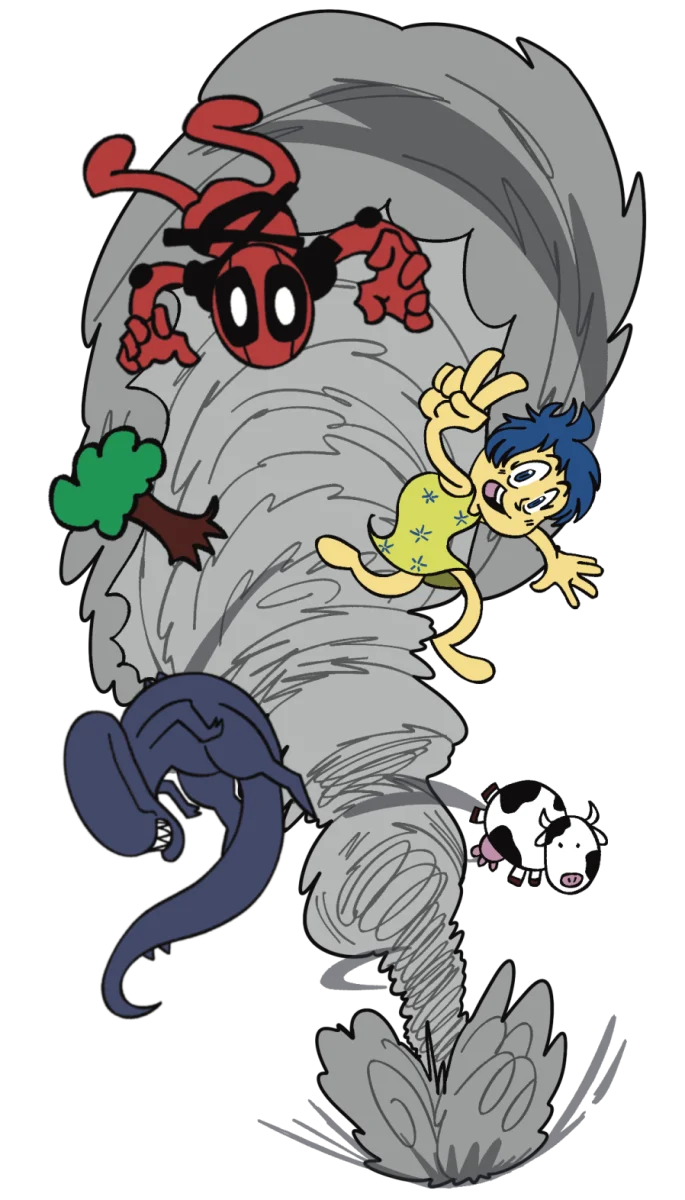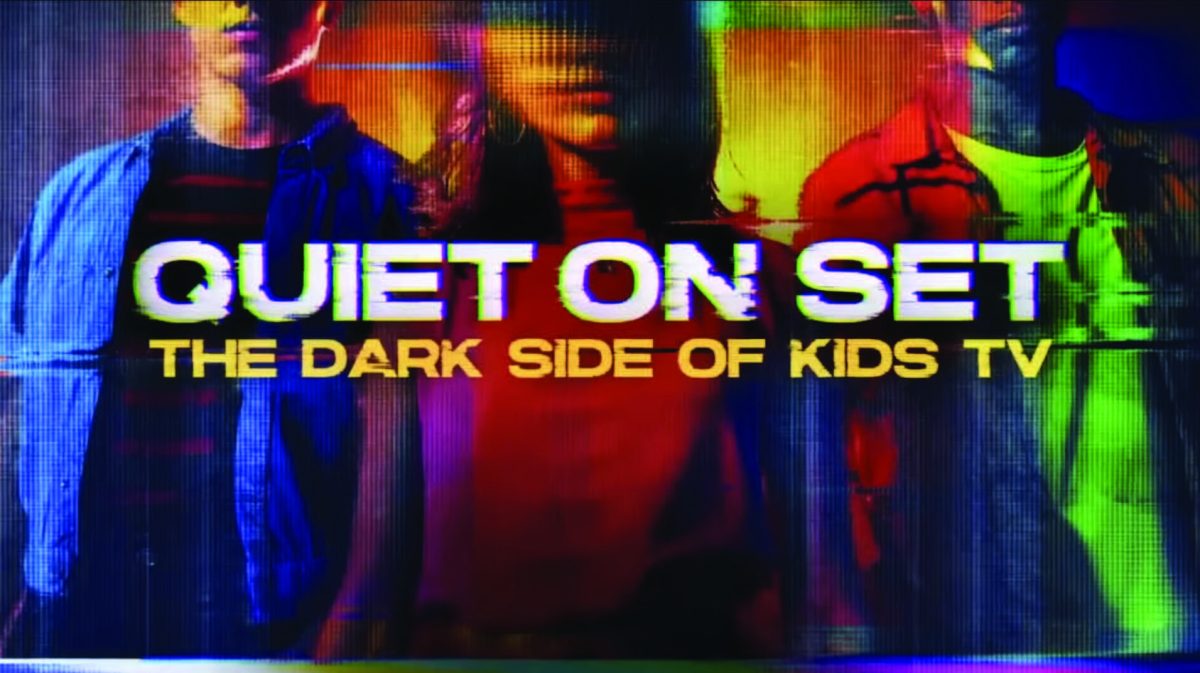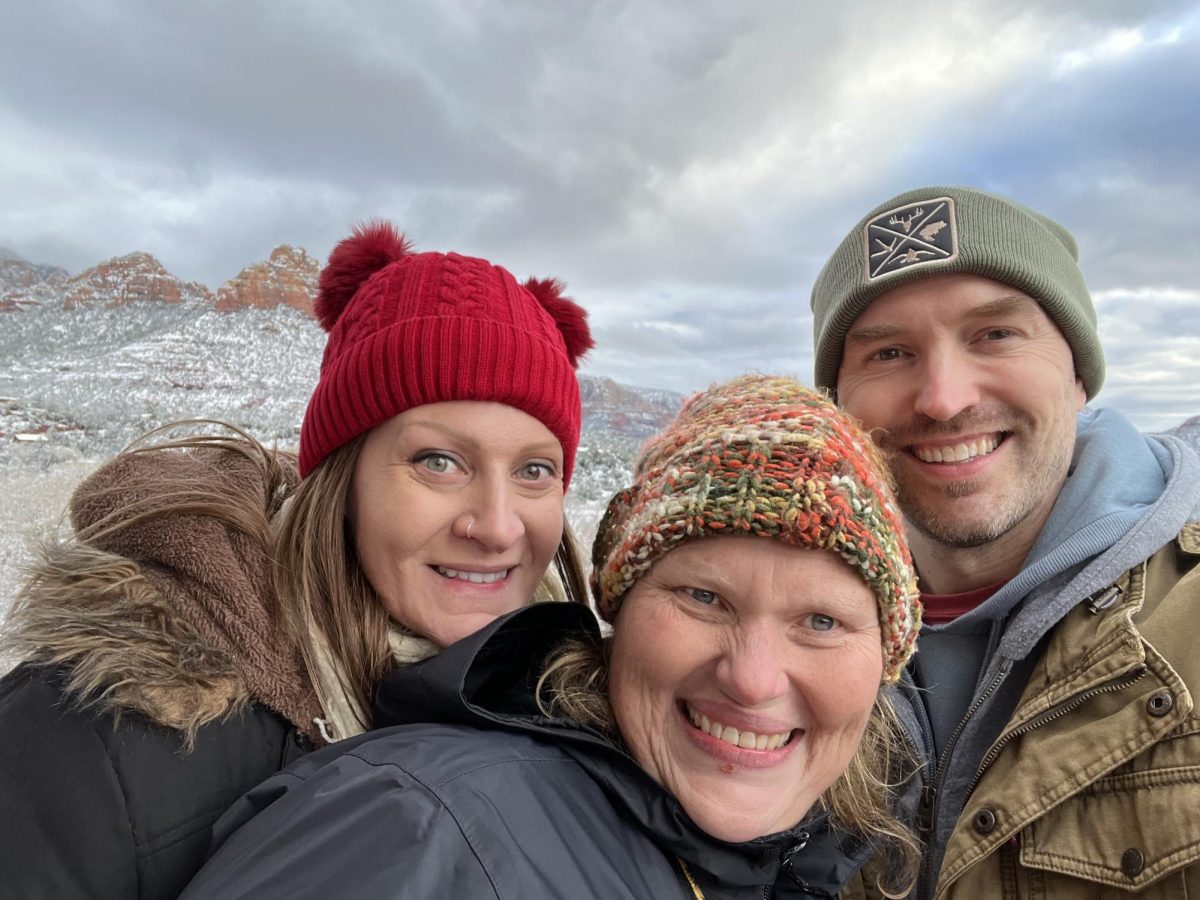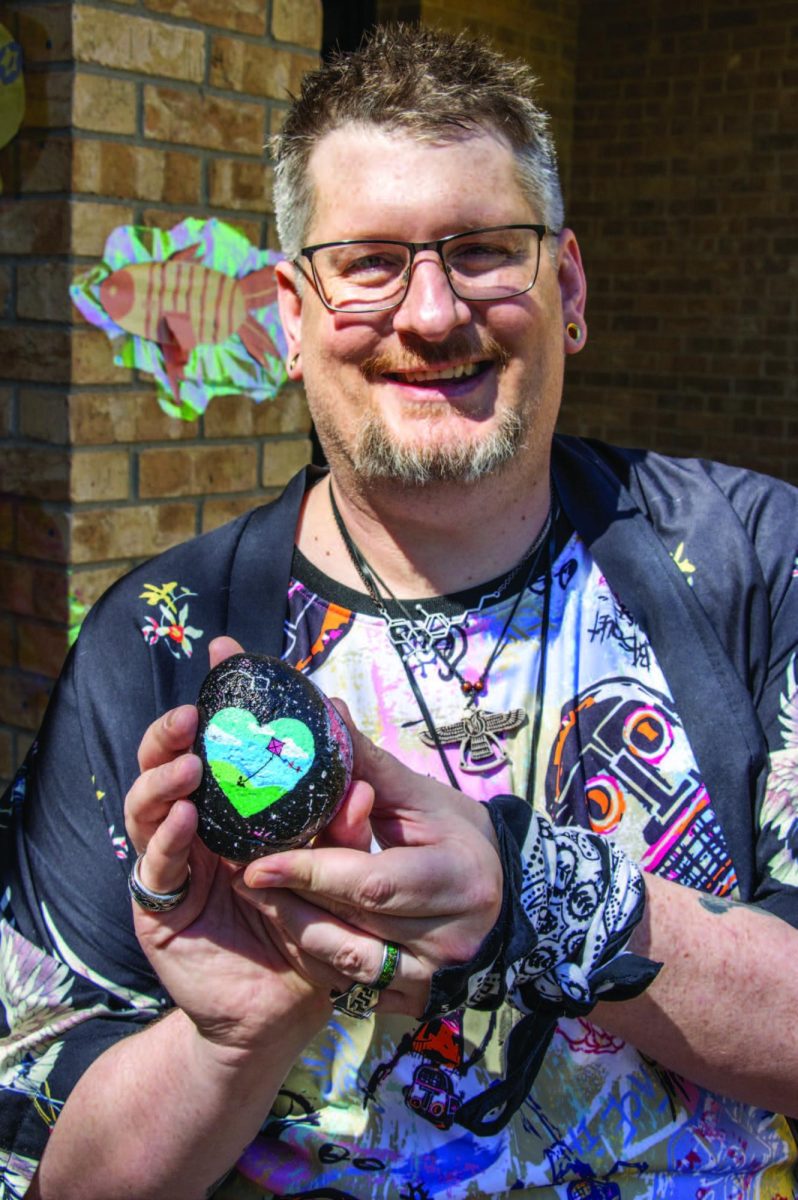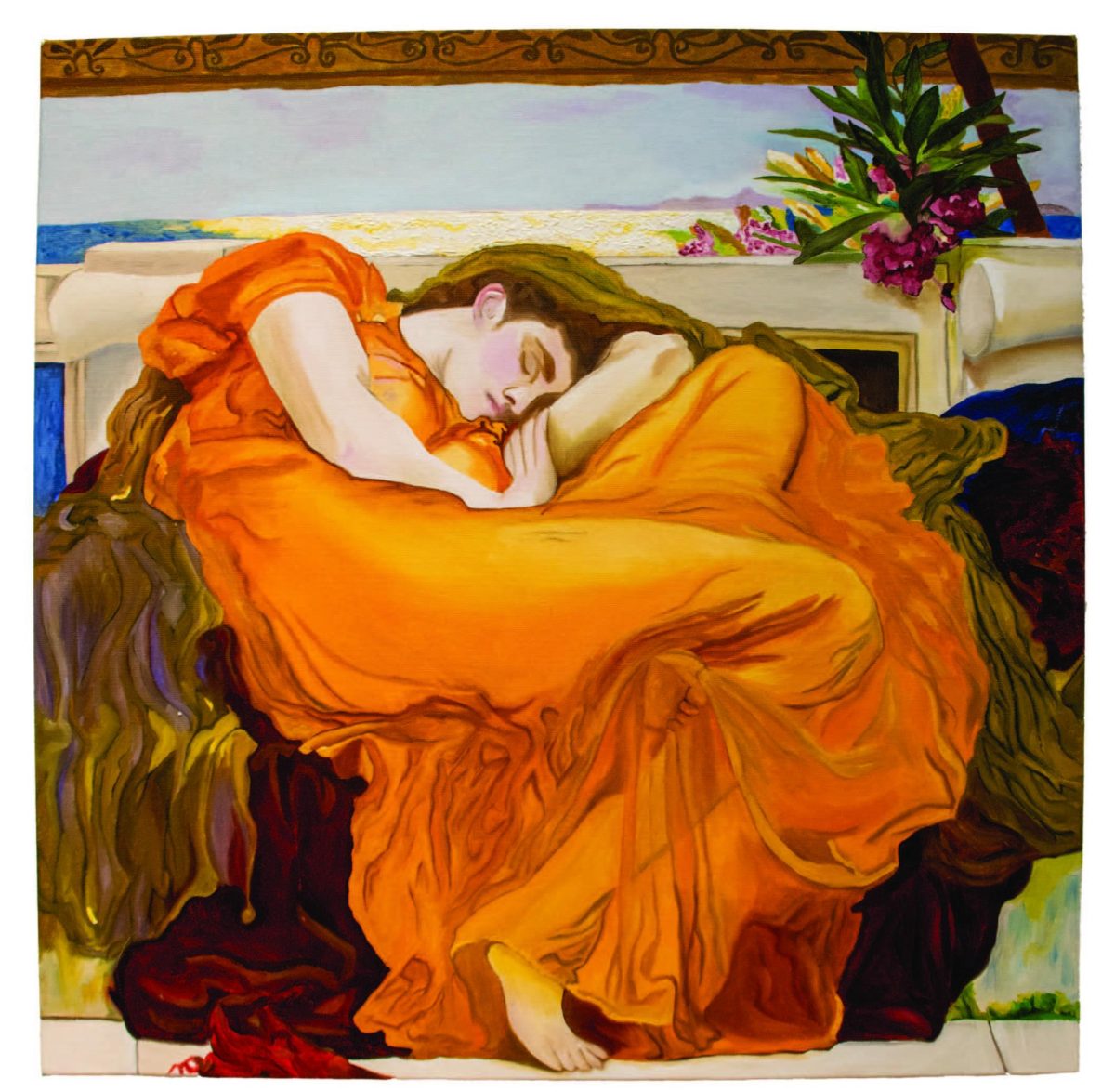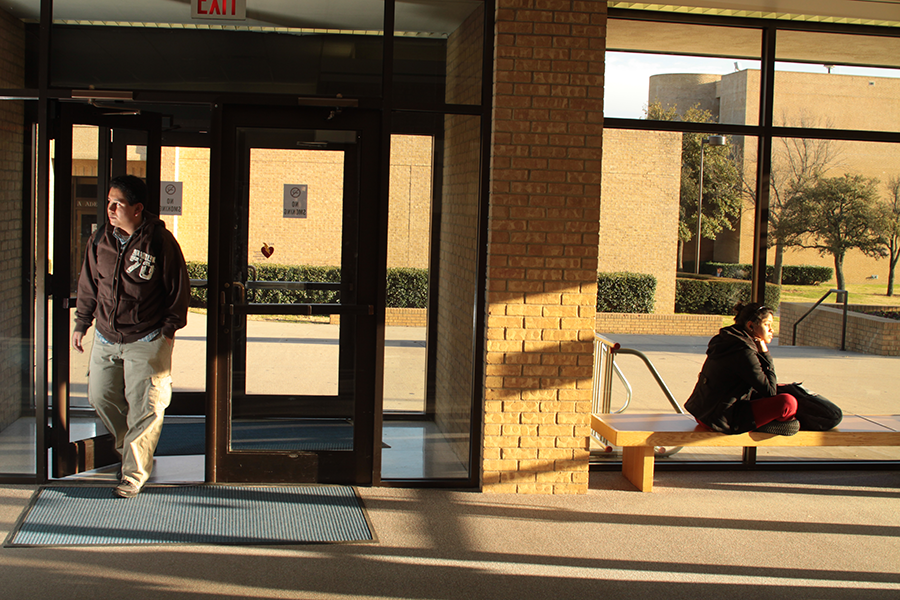By Ciaran lambert/tr news editor

Photos by Casey Holder/The Collegian
Life being made up of connections — systems that connect cells, organs, people, countries — is the idea behind NE Campus’ newest art exhibit.
Interconnectivitycomprises a series of paintings by NE Campus art teachers: two by Rebecca Briley, two by
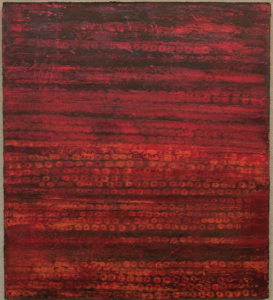
Photos by Casey Holder/The Collegian
Andrew Stalder and one by Cynthia Hurt.
The exhibit was created by Hurt, who approached the NE art department about exhibiting some of their best work. Hurt said when Briley and Stalder joined the project, they brought their own work. The three saw a set of inner working systems in the paintings themselves.
“I noticed a parallel in work that related to systems,” Hurt said. “Brushstrokes, surface, textures all similar, yet very different.”
Hurt’s painting “Wave,” is a deep red oil-on-canvas painting that looks like blood cells coursing through the body. Hurt described the work as a system of life that ebbs and flows.
“It has to do with life cycles,” she said. “We have cycles in nature, in our cells and in our world.”
Hurt earned her master’s at the University of Texas and became an adjunct art instructor in 1986. In 2004, she was hired as a full-time associate professor of art.
Stalder’s work is a type of graffiti on canvas, which Stalder describes as random order out of intentional chaos.
Stalder’s pieces, “Parallel Dimension” and “Soul Vampire,” use ink, latex and marker on canvas.
“Connections we all share in art-making processes,” Stalder said about why he believes his pieces work with Hurt’s and Briley’s. “My pieces have no real meaning. I want people to make their own meaning when it comes to the pieces.”

Photos by Casey Holder/The Collegian
Stalder refers to his work as writing without words and said he enjoys graffiti because it is his own unique mark on a canvas.
“Painting and writing are intricately linked,” he said. “Most that paint use marks that aren’t their own. Graffiti is marked to one person.”
In the end, Stalder hopes his students take something away from the exhibit.
“I hope that they see the possibility of putting medium on canvas,” he said. “I want them to know that there is more than one way to paint.”
Stalder earned his master’s at Ohio University and became an adjunct in 2007 before becoming a full-time associate professor in 2008.
Briley’s work utilizes watercolors to create images of small houses in unique worlds.
Her pieces, “Tilting” and “Untitled,” contain one thing that stands out, a house. Judie Smith, NE Campus librarian, said that “Tilting” reminds her of houses one would find in the Pacific Northwest. The color scheme on one work is white and brownish color while the other uses blues, whites and blacks to depict a house falling.
Interconnectivity runs through March 10 in the NLIB main lobby. Hurt said toward the end of February, an artist talk will feature the three artists.
The NE library is open 7:45 a.m.-10 p.m. Monday-Thursday, 7:45 a.m.-9 p.m. Friday-Saturday and noon-5 p.m. Sunday.
For more information, contact Hurt at cynthia.hurt@tccd.edu.






